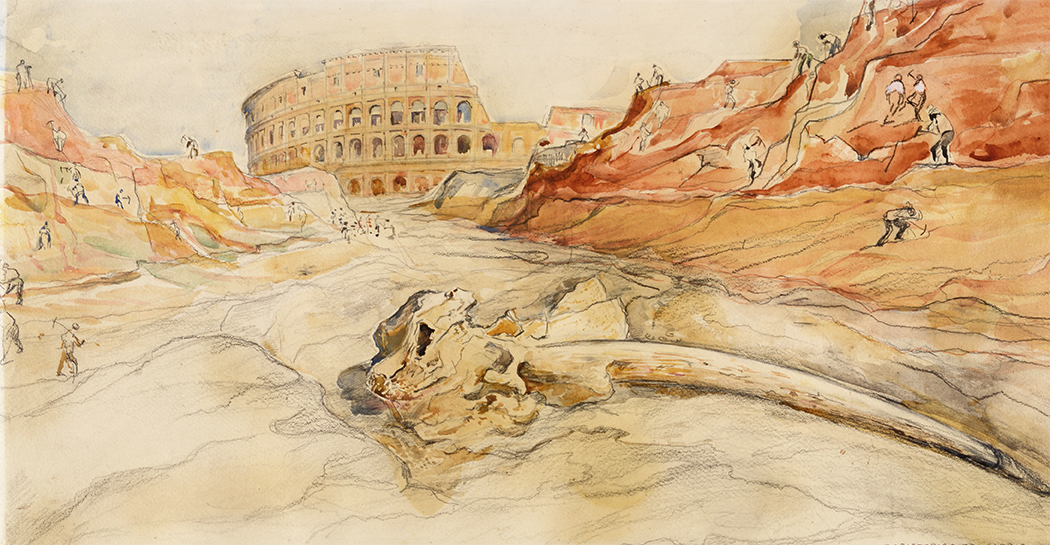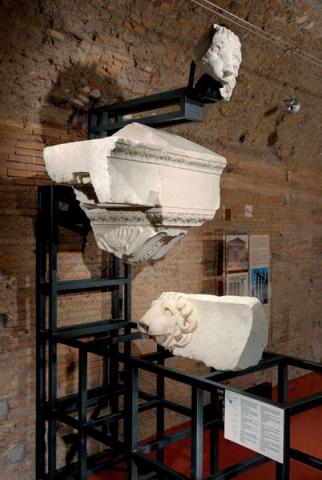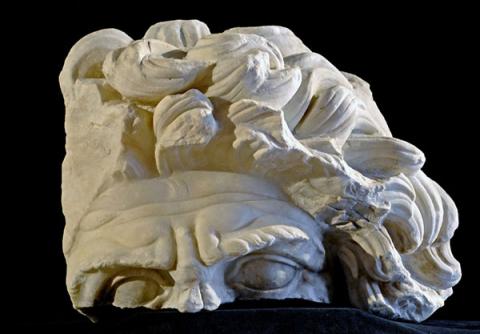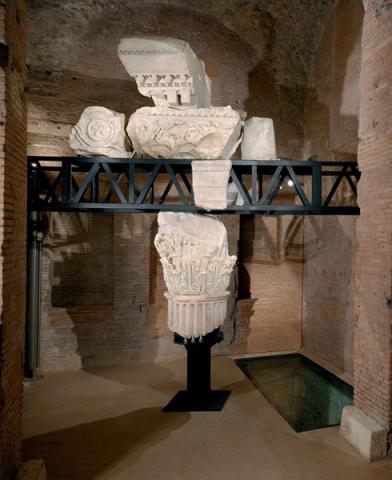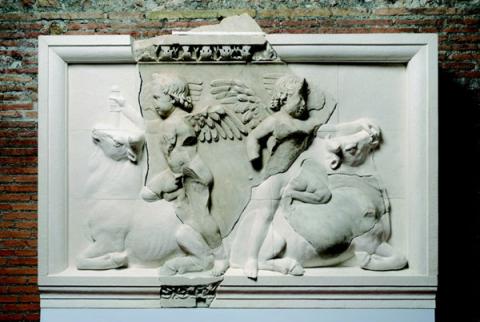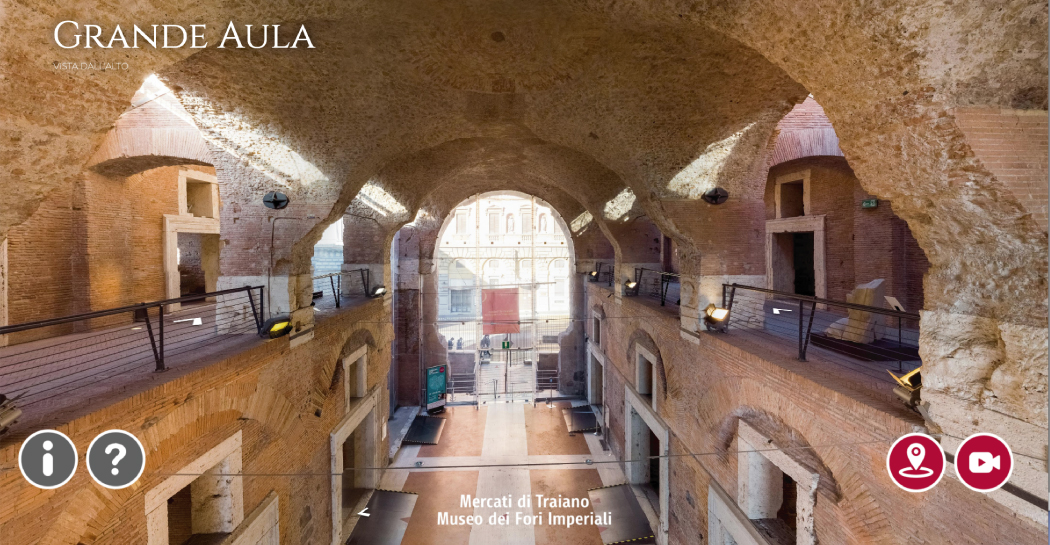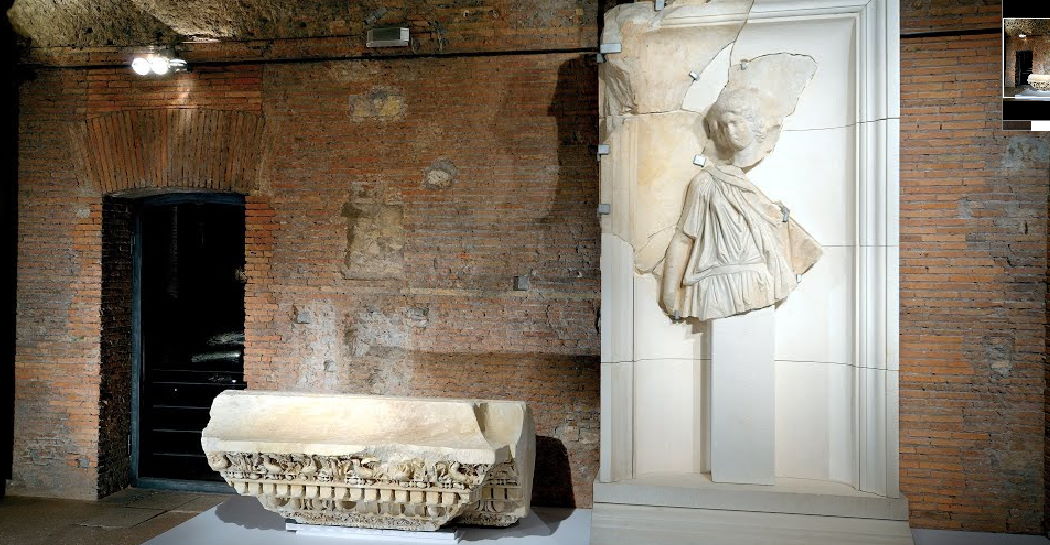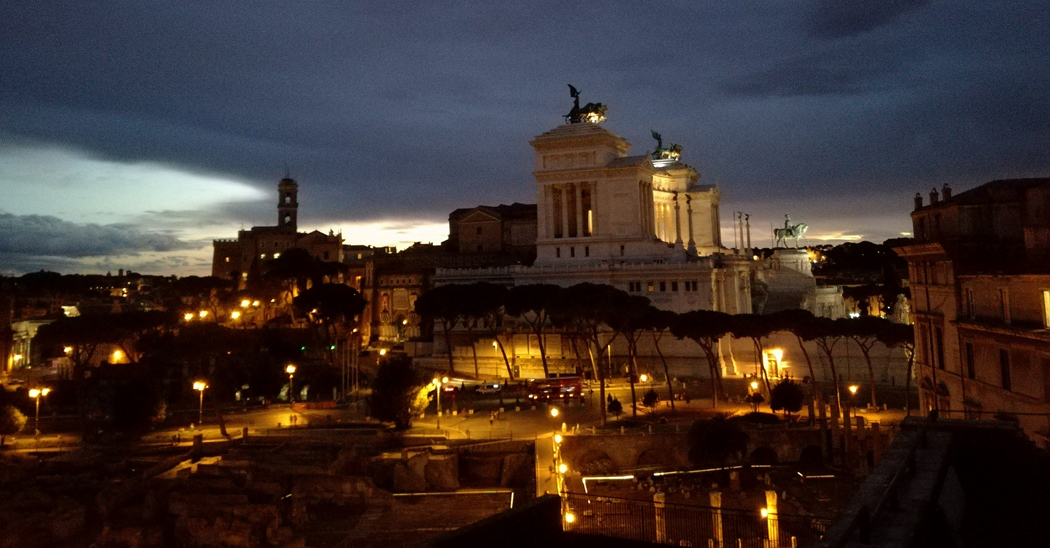Conferences on 7 February 2023
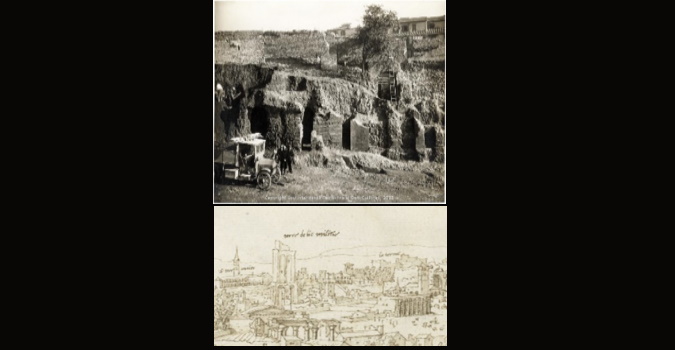
Stefania Fogagnolo: La Velia dopo il 1932: le conoscenze di epoca romana.
Angela Napoletano: Le preesistenze medievali nell'area di Palazzo Silvestri Rivaldi.
La Velia dopo il 1932: le conoscenze di epoca romana.
Occupied from the Archaic period, the collina Velia was mainly used for residential use from the Republican period with the construction of rich domus. Under Emperor Nerone, the hill was incorporated into the monumental architectural plans, never completed, of the new imperial residence, who started the progressive reduction and obliteration of the hillsides. During excavation works in the years 1931-1932, in the area between the Basilica di Massenzio and the Pio Istituto Rivaldi, some remains pertaining to a building fabric of the imperial age were identified, and part of a domus possibly dating back to the mid-first century AD, with extensions from the beginning of the second century, was intercepted. The imposing structures, after rapid documentation, were completely destroyed, sacrificed, like most of the ancient remains found from Roman times and beyond, to the necessity of the linear layout of the Via dell'Impero. Their discovery was also shrouded in an unusual lack of public resonance compared to other discoveries.
Using the valuable evidence of the documentation compiled at the time, mainly graphic and photographic, kept in the archives of the Sovrintendenza Capitolina, a picture of the main archaeological contexts of the Roman period found during the excavation operations is sketched out, which nonetheless remain a valid testimony of the settlement phases that affected the hilly saddle linking the slopes of the Palatino and the Esquilino in Roman times.
Stefania Fogagnolo, an archaeologist, graduated and specialised in Topography of Roma e dell'Italia Antica at the Sapienza University of Rome, where she also obtained a PhD in Archaeology. After a long activity in emergency archaeological excavations and research, particularly in the area of the historic centre of Rome, she has been working for several years in the Sovrintendenza Capitolina at the Ufficio dei Mercati di Traiano-Fori Imperiali, for which she supervised the excavation of Via Alessandrina and Largo Corrado Ricci. She is the author of several scientific and popular publications. She is co-curator of the exhibition in the Museo dei Fori Imperiali: 1932, l'elefante e il colle perduto (2022).
Le preesistenze medievali nell’area di Palazzo Silvestri-Rivaldi
Following the assignment given to the Sovrintendenza Capitolina in 2006 to draw up a project for the restoration of the Palazzo Silvestri - Rivaldi and its use as a museum in view of an agreement with the Istituto S. Maria in Aquiro, the owner of the building, a research group was set up to study the building, track down new documents and bring together the various information on the subject. From this research it emerged that the palace is the result of interventions made at various times to the residence that Eurialo Silvestri had built in the Monti district, on the Velia hill, located between the Via Sacra and Via del Colosseo, the Valle dell'Anfiteatro and the valley towards the Subura, at the ancient Foro della Pace and in the immediate neighbourhood of the Foro Transitorio. The study of the construction phases provided the opportunity to shed light also on the urban fabric of the area where it was built, thus bringing about some significant changes. In fact, the works undertaken led to the destruction of the church of S. Maria 'arcus aurei' (or 'de arcu aureo') and the chapel or oratory of S. Margherita; the subsequent extensions of the palace also caused the definitive disappearance of the church of S. Maria de Cambiatoribus and the nearby Torre della Contessa. Through the study of archive documents and historical views, an attempt was made to reconstruct the salient phases of these structures existing since the Middle Ages, hypothesising their location and relating them to the surrounding buildings.
Angela Napoletano: graduated in Literature at the University of Rome 'La Sapienza', Department of Rilievo ed Analisi Tecnica dei Monumenti Antichi (1988) where she also obtained her postgraduate degree at the 'Scuola Nazionale di Archeologia di Roma' (1997). She has carried out excavation, reconnaissance and survey activities in Italy and abroad; she was president of the L.A.T.E.R.E.S. Archeologia e Territorio Cooperative for 13 years and a founding member of the Associazione Culturale L.A.T.E.R.E.S. with which she has carried out teaching activities at the main monuments in Roma and Lazio. Since 2002, she has been employed by the Sovrintendenza Capitolina where she currently holds the position of Curator of Cultural Heritage in charge of the technical-scientific activities relating to the protection, conservation and valorisation of the historical-architectural heritage of Villa Borghese and Villa Balestra, and of the management, conservation and valorisation of the antiquarian section of the Villa Borghese sculpture deposits set up at the Pietro Canonica Museum and the Casino del Graziano. She is the author of several scientific articles.
The conferences will be followed by a visit to the exhibition 1932, l’elefante e il colle perduto
The conferences are recorded and put online on the FB page of the Mercati di Traiano the following week
Information
February 7 at 15.30, duration 90' (1h conference + 30' visit to the exhibition)
Participation with payment of the entrance ticket according to the current rates
Reservation required on 060608 (every day 9.00-19.00)
Maximum 30 participants
1010561
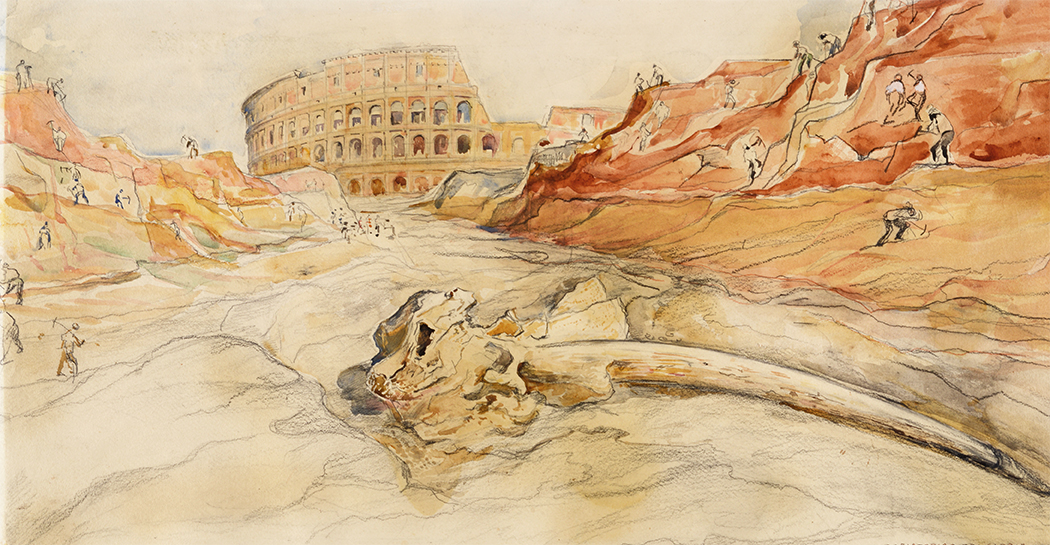
Eventi correlati
1012299
